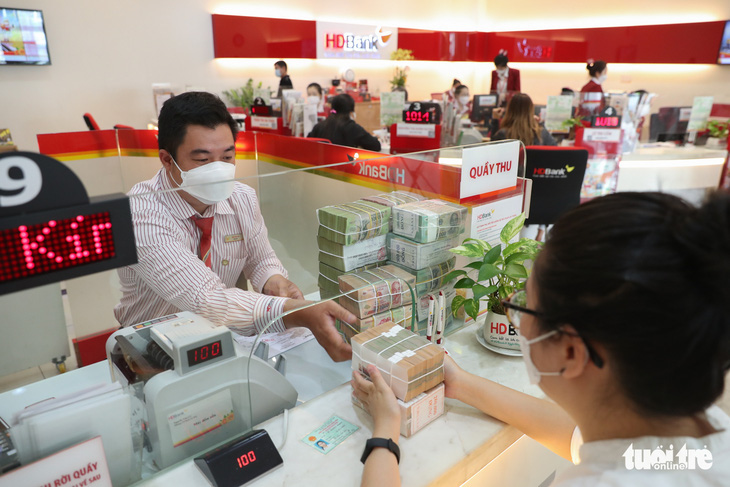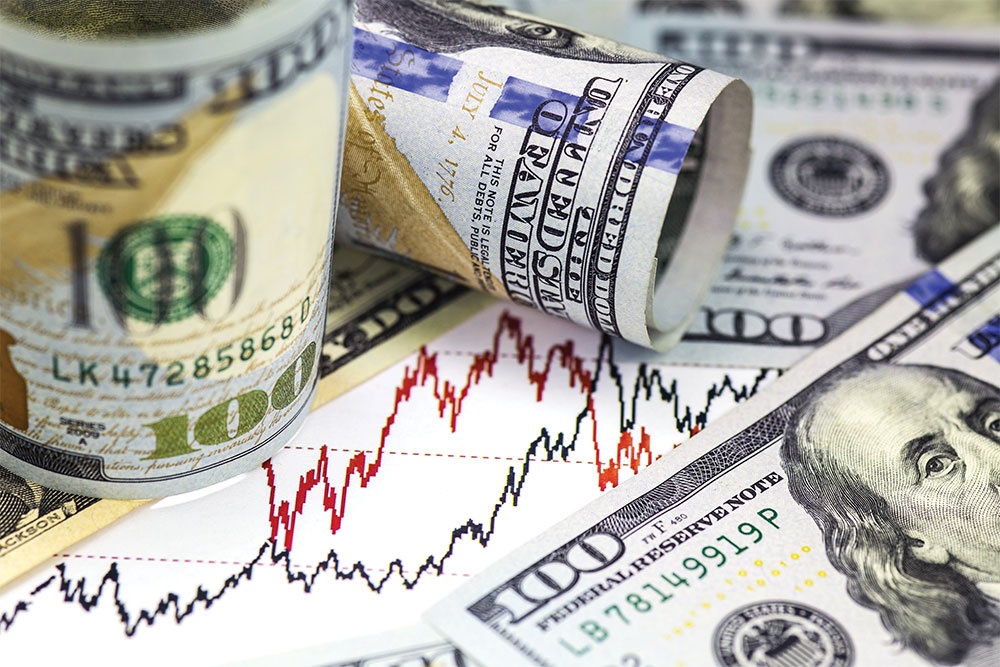Global banking crisis: Is Vietnam at risk?
Global banking crisis: Is Vietnam at risk?
During the pandemic, commercial banks in developed economies like the United States and EU struggled to find companies that welcomed their money for investment. Even the historical low interest rates could not convince companies to invest in new projects or new technologies.
Despite the grim outlook during the pandemic, banks were not in a position to just keep depositors' money in their vaults, they had to invest to generate profit. Therefore, many banks, especially in the US, decided to purchase government bonds to generate at least a small return while accepting little risk. This strategy was understandable, as it was probably the most conservative and straightforward alternative while facing a lack of appetite for capital from companies.
Once the lockdowns ended, the situation reverted. Inflation suddenly started to climb rapidly due to the enormous amount of money that central banks pumped into the economy, paired with the rise in energy prices due to the ongoing Ukraine-Russian war. The US recorded a 9.1 per cent inflation rate in June 2022, the highest in 40 years. The Eurozone hit the 10 per cent mark in September 2022, its highest-ever recorded rate.
In the race to contain inflation, the central banks raised interest rates at record speed. The US Federal Reserve raised their interest rates from 0.25 per cent to the current 5 per cent in less than a year. The European Central Bank raised interest rates from 0 to 3.5 per cent in under seven months. For both institutions, this represents the fastest rate of increase in their history.
While this made sense to stop rising inflation, it has caused other unwanted damage. For example, when a bond is issued at 2 per cent interest per year, it is valued at 100 per cent of its market value. If an identical bond is issued at a later date, giving the holder 4 per cent interest, the first bond looks much less attractive. In that case, the first bondholder would have to accept a price reduction if the old bond is to be sold, as there is a better investment opportunity available.
A 1 per cent increase, depending on the type of bond, may easily lead to a decline of 8 per cent in the value of old bonds. Some commercial banks had stocked up on US government T-bonds, which represent very little risk, so long as the bonds are kept until they expire, returning the full investment capital plus interest. However, if depositors come demanding their deposits, as happened last month with Silicon Valley Bank, the bank will be forced to sell some assets, in this case at a large loss, to gain liquidity quickly.
This led to the fall of Silicon Valley Bank, the near-collapse of First Republic Bank and a shake up of the global banking sector, impacting Europe with Credit Suisse and Deutsche Bank prominently affected. Still, most commercial banks have navigated this recent crisis unscathed. For Vietnam, it seemed news from a far-away land, impacting daily business minimally. But are Vietnamese commercial banks at risk, and could we witness a collapse like at the recent Silicon Valley Bank?
Vietnam should act now to avoid pandemic resurgenceRecession threat for 2023 as interest rates continue to riseNavigating tariff roadmaps for automobile imports
Several factors speak in favour of the Vietnamese banking system. First, Vietnamese commercial banks hold far fewer government bonds than their US counterparts. Furthermore, Vietnam survived the pandemic with a fairly healthy business community, which still allowed banks to lend capital to corporate ventures, even during the darkest hours.
In addition, the State Bank of Vietnam (SBV) has not increased interest rates as fast and dramatically as its western counterparts, even reducing the rate by 0.5 per cent following its mid-March meeting. In fact, the SBV has room for more interest rate reductions, as the inflation rate in Vietnam hasn't risen as rapidly as in other countries. Therefore, even if commercial Vietnamese banks held bonds, their losses would be far more limited. Additionally, while US government bonds can have maturities of up to 30 years, Vietnamese government bonds typically become mature after only 3 to 5 years.
In the past, Vietnamese banking crises, including a major one in 2012, have led the SBV to tighten banking regulations, making the sector more stable. Also, several lenders now comply with conservative, international banking regulations like Basel 3. Lastly, the SBV has signalled multiple times that they would step in and coordinate an orderly solution if any commercial bank should become endangered.
Still, while Vietnam’s commercial banks may not be at risk, the real estate sector has been shaken up due to the interest rate increases, causing some tension. Furthermore, the Vietnamese financial sector is typically short-termed. Most companies can only finance their investments through short-term credit. As these credits mature, they now need to refinance at higher rates than usual, putting pressure on their cost-structure. Long-term credit would help to strengthen corporations and, beyond that, the overall economy.
Another pressure point is bad debts. To cope with the pandemic, the SBV allowed commercial banks to be less strict with bad debt. This allowed commercial banks to not write off debt that was held against businesses that were negatively impacted by the pandemic. While some businesses did recover since then, banks still hold substantial bad debt. The ratio of high-risk loans, which eventually may have to be converted into bad debt, currently stands at 7.42 per cent.
Overall, it does not seem that the Vietnamese banking sector is currently at risk of any bank closures. Still, the current pressure may be a good opportunity to strengthen the financial sector further. Allowing companies to embark on longer-term projects, while not having to worry about debt refinancing in the short term, would be a step in the right direction. Additionally, freeing up the outflow of capital would make Vietnam’s capital market more attractive to foreign capital.
And although counter-intuitive, allowing money to flow out of the country, will lead to higher capital inflows as international investors are assured that they can recover their capital if needed.
























